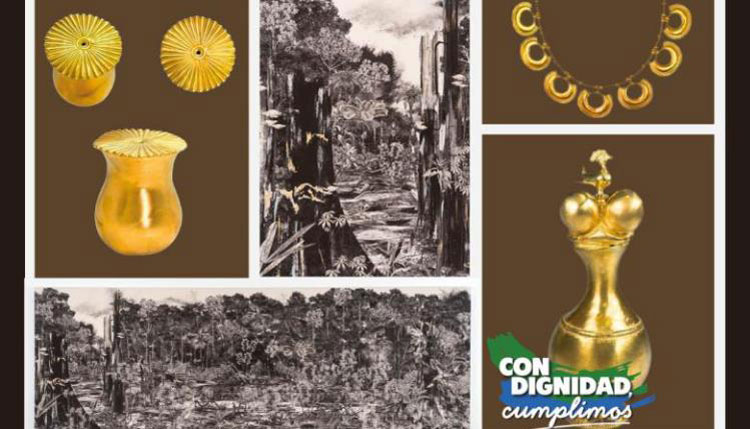The Ministry of Foreign Affairs of Colombia, in partnership with nine embassies in Europe and with the support of Artesanías de Colombia, presents the international tour Oro & Hoja de Coca: Más allá del pensamiento colonial y la estigmatización contemporánea, a travelling exhibition that between October and December 2025 will cover nine European countries and more than 10,200 kilometres: Italy, Austria, Spain, Poland, France, Portugal, the Netherlands, the Czech Republic and Finland.
In Spain, the exhibition was presented yesterday at the Museo de América in Madrid (Avenida de los Reyes Católicos, 6) and will be open to the public today and tomorrow, 22 and 23 October.
For 70 days, the exhibition brings to the European continent the best of Colombian heritage and contemporary art, as a landmark of cultural diplomacy and an example of the international projection of Colombia’s public cultural policy.
The heart of the exhibition is composed of 56 exact replicas of the Quimbaya Collection, made by the master Omar Hurtado, recognized as the time traveling goldsmith, who has taken the Colombian pre-Columbian art to unique settings in the world.
Alongside these pieces, the work La Chagra de Amoka by artist Tatiana Arocha gives life to tropical forests and the ecological memory of indigenous peoples, making an urgent call to protect biodiversity and questioning extractive economies.
The exhibition proposes a symbolic journey that confronts the colonial narratives that transformed gold into an imperial trophy and criminalized the coca leaf, ignoring its ritual, medicinal and cultural uses. In this sense, Oro & Hoja de Coca invites a deep reflection on colonial thinking, contemporary stigmatization and new global narratives about restitution, repatriation and the fight against illicit trafficking of cultural goods.
Oro & Hoja de Coca is, in short, a project that makes visible the memory and symbolic sovereignty of Colombia, fostering a dialogue that crosses borders between art, heritage and foreign policy. It is a tool of cultural diplomacy that places at the center the values that unite peoples and reaffirms Colombia’s commitment to a future of heritage justice and respect for diversity.
